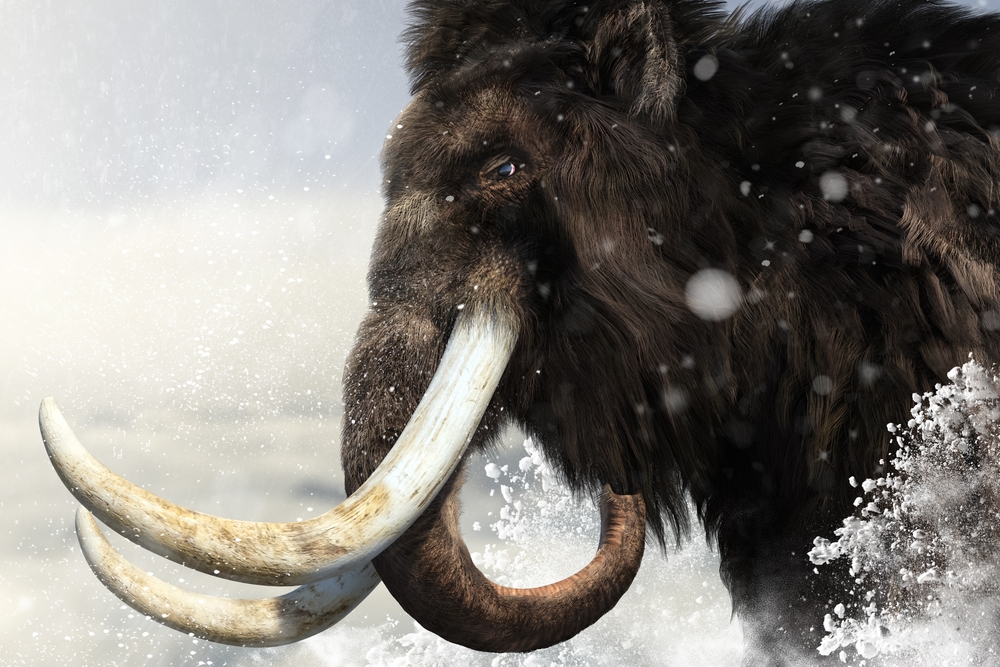Mammoths Endured Musth, the Wild Process that Affects Bull Elephants
Posted on Categories Discover Magazine

“Musth,” an annual ordeal which turns male elephants into oozing, aggressive pachyderms, appears to have also affected male mammoths that lived thousands of years ago, according to a new study.
Researchers from the University of Michigan led a team that procured a male mammoth tusk first discovered by a diamond-mining company in Siberia in 2007. From this massive tooth, they would detect ancient testosterone levels using a novel method.
How to Detect Mammoth Testosterone
First, researchers took a CT scan of the tusk to gauge how much it grew each year. Then, while looking through a microscope, they ground away a half-millimeter of dentin using a robot. Finally, the powder went in for analysis.
Rich Auchus, an endocrinologist at the University of Michigan, who normally teaches within the Medical School, developed a new technique for this study to extract steroids from the powdered tusk. He intended to use mass spectrometry, the common method for determining molecular mass, to hunt for testosterone.
Read More: Were Woolly Mammoths Always Woolly?
“We had developed steroid mass spectrometry methods for human blood and saliva samples, and we have used them extensively for clinical research studies,” he says in a press release. “But never in a million years did I imagine that we would be using these techniques to explore ‘paleoendocrinology.’”
The burgeoning field centers on the study of ancient hormones.
Mammoths With Musth
Auchus also analyzed powder from a male African elephant and found annual testosterone spikes consistent with musth, as expected. “Then we saw the same patterns in the mammoth,” he says.
Based on the length of the mammoth tusk, the male had lived to be about 55 years old and died more than 33,000 years ago in Siberia. During musth, which comes from the Hindu and Urdu word for “intoxicated,” his testosterone levels had soared to about 10 times their normal amount.
Read More: Million-Year-Old DNA Yields Mammoth Surprises
When male elephants go through musth, they become unpredictable and trickle urine on the ground as they walk. Most famously, they ooze “a thick tar-like secretion called temporin” from two scent ducts on the sides of their head, according to the Cincinnati Zoo.
Paleoendocrinology and Ancient Hormones
But it was dentin, the calcified interior of all teeth, that made the study possible.
“This study establishes dentin as a useful repository for some hormones and sets the stage for further advances in the developing field of paleoendocrinology,” says lead author Michael Cherney in a press release. “In addition to broad applications in zoology and paleontology, tooth-hormone records could support medical, forensic and archaeological studies.”
Scientists have already analyzed ancient and modern hair, nails and teeth for hormones, results that some scientists have questioned, according to the release. The authors say they hope “their findings should help change that by demonstrating that steroid records in teeth can provide meaningful biological information that sometimes persists for thousands of years.”